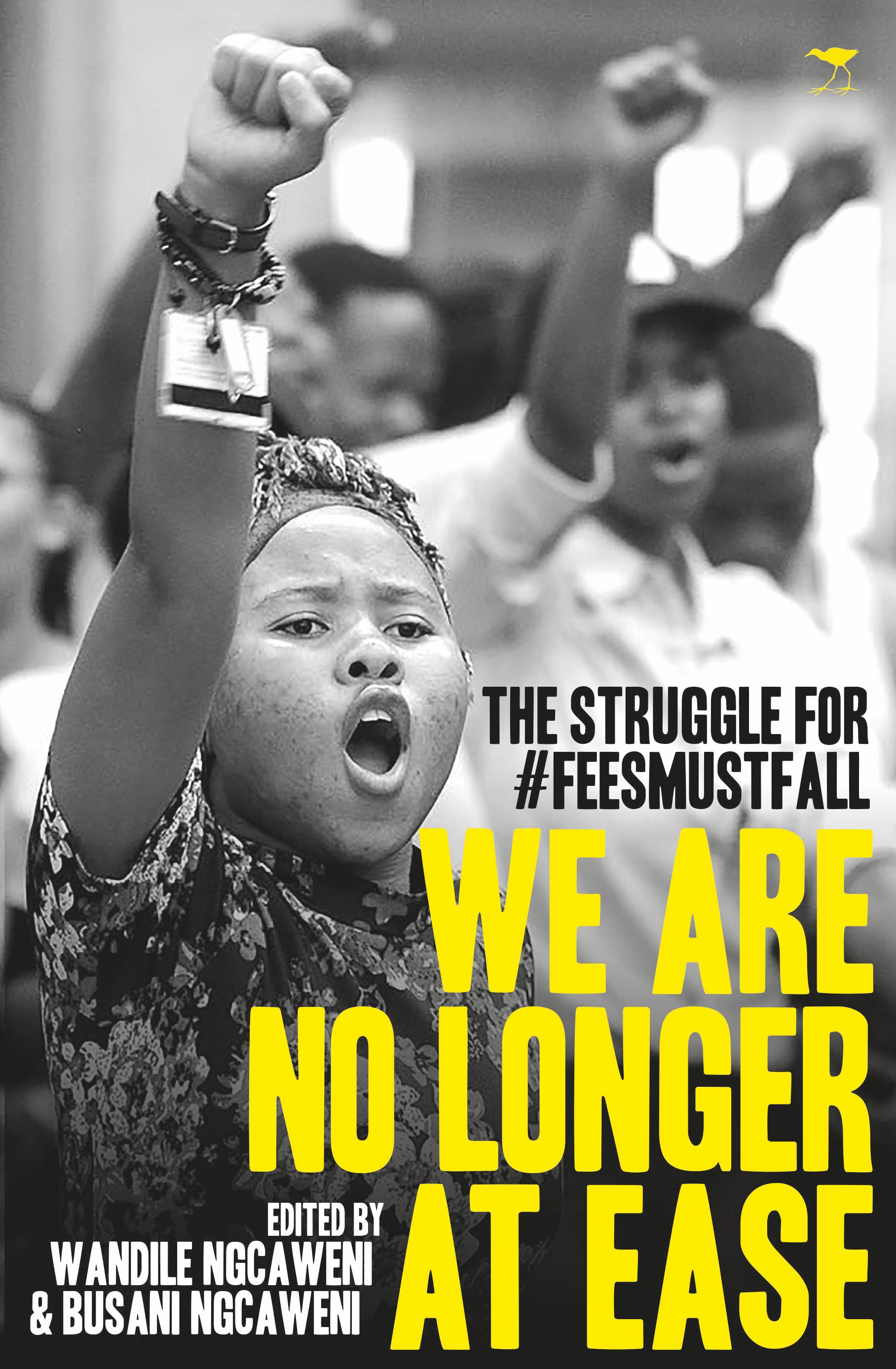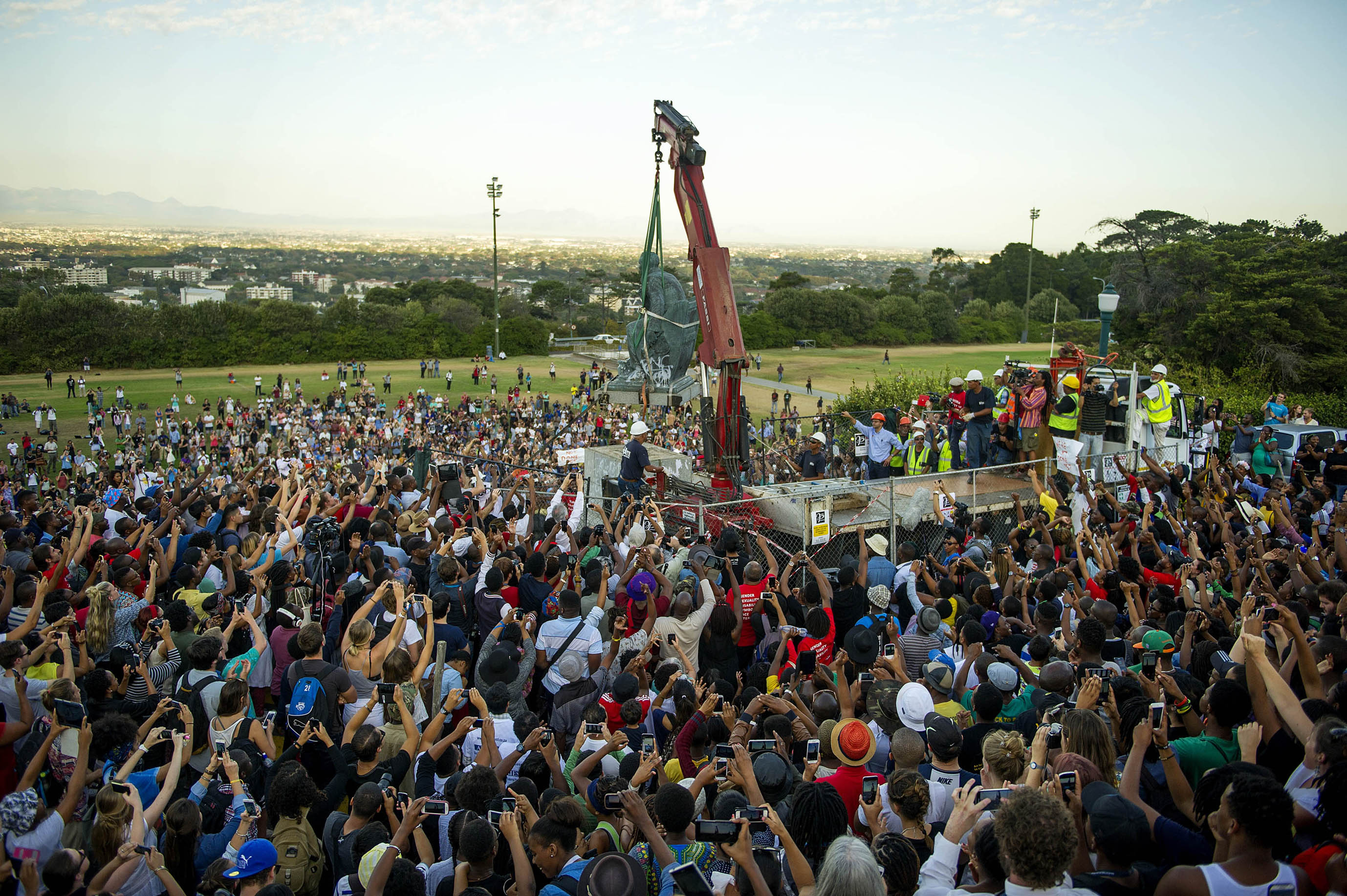Zinhle Majozi lights candles next to a portrait of Mlungisi Madonsela during a memorial service. He was shot outside the Durban University of Technology during clashes between students and security guards. Photo: Jabulani Langa/Gallo Images/Daily Sun
Two weeks ago, Mlungisi Madonsela, a student at the Durban University of Technology’s Steve Biko Campus, was shot and killed in a stand-off between protesters and private security.
He was not the first casualty of the violence meted out to protesters at higher education institutions since 2015, when the #FeesMustFall movement was born. But the movement has been stalked by death in more ways than one. As its righteous project has, over time, been infiltrated by more organised political emissaries, it has been increasingly difficult to understand, especially from afar.
This is what the book We Are No Longer at Ease supposedly addresses. It borrows its title from Chinua Achebe’s 1960 novel and brings together the ever-spiralling archive of opinion, analysis and histories about the 2015 student protests. This attempt to consolidate different fragments of the movement leaves us with curious juxtapositions and a strange mingling of starkly incompatible ideas.

We Are No Longer at Ease edited by Wandile Ngcaweni & Busani Ngcaweni (Jacana Media)
The promise to delve deeply into the formal contradictions of the student movement is set out in the book’s foreword, which offers its assessment of the often glorified period. In it, Malaika wa Azania writes: “While the movement was progressive in many ways, it also had deep-seated regressive elements that ultimately eroded its revolutionary character.”
It’s an unexpectedly cynical characterisation of a movement that is supposed to have shaped the political consciousness of so many young people. This ambivalence is somewhat reflected in the book’s form.
There are some truly inspired moments in how the book is put together. A speech by Ramabina Mahapa, the University of Cape Town’s students’ representative council president when #RhodesMustFall took place, is sandwiched between two essays about white privilege by two white men. All three were written in 2015.

The Cecil John Rhodes statue is removed at the university of Cape Town on April 9, 2015. Photo: David Harrison.
They contain similar analyses of whiteness and all offer insight into the self-flagellating political language of the time. It’s evocative in a stomach-churning kind of way.
Another great transition happens between chapters 12 and 13.
First, Asanda Luwaca gives a relatively comprehensive history of the ANC Youth League’s legacy of going up against the governing party at key political moments. Luwaca uses this history to underscore how the organisation was caught flat-footed and failed to provide the students with meaningful support.
This is followed by Wandile Ngcaweni, who gives a breakdown of how the Economic Freedom Fighters were able to capitalise on the fee protests to secure a near-monopoly over campus politics.
Where Luwaca is critical of the youth league’s student formations, Ngcaweni is damning. “The PYA [Progressive Youth Alliance] has been slow to shrug off perceptions that its leaders are not genuinely concerned about the plight of poor students. Allegations of using access to power and resources go on for months unchallenged. This spreads the image of leaders preoccupied with themselves, conspicuous consumption and popularity.”
Read together, these essays provide a worthwhile analysis of the changing political attitudes under former president Jacob Zuma. They also pre-empt any analysis that might be made about the rise of populism and how it might be used in the upcoming general elections.
The book’s form is also what creates its more disappointing moments. The first section deals with the theoretical contours of the student movement. Putting the theory up front is an easy way to lose any reader, especially when many of the ideas in these chapters are from very early on in the movement. The preoccupation with the past makes the book’s immediate offering seem stale and not necessarily useful.
This becomes particularly disappointing when, throughout the anthology, you are teased with what We Are No Longer at Ease could have been — a look into the challenges of organising a genuinely radical political movement today.
Mcebo Dlamini’s essay gives a glimpse of this when he recounts the inevitable logistical trials of trying to sustain the snowballing movement.
“With the FMF [#FeesMustFall] gaining popularity … more people wanted to fund the movement. We needed people to organise those funds. We needed to decide who would go to the conferences and dinners. We needed to start operating in an organised manner. This caused many fractures within the movement because everyone wanted to have their hands on the pie,” he writes.
The preoccupation with asserting a theoretical position clouds any historical analysis of a movement begging to be laid bare.
This is what makes Anele Madonsela’s essay, When Women Become a Danger to the Revolution, so intriguing. She provides a frank meditation on the cracks that began to form between student leaders at the University of Johannesburg and on the mental toll that the brutality meted out by authorities took.
What Does a Revolutionary Look Like? topples the fetishisms of a movement powered in the main by identity politics — the strange words, the self-styled Fanonism, the masks of pain.
In it, Tshepiso Modupe tackles the romanticisation of the movement and its potentially destructive effects.
“My situation became ironic because I was now the beautifully painful embodiment of black colour … I was not on the outside looking in anymore; I was inside, I was as much a part of it as it was a part of me, and I hated it,” she writes.
In her account, the excitement of the movement’s early days was slowly crushed by self-indulgent political posturing.
Modupe appears on the cover of We Are No Longer at Ease — an image of defiance. But within, the book attempts to expose a revolution left shaken by its own inconsistencies. The pieces offering this sort of analysis are buried between well-worn arguments that are unlikely to serve a movement fighting for its survival.